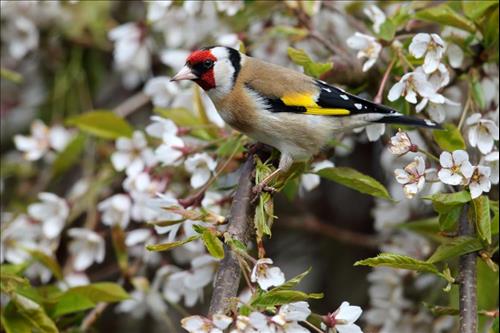(MENAFN- The Conversation) For many, the COVID-19 pandemic has had a , but the chance to get out into nature provided some much needed respite and escape during a difficult year.
Following restrictions in March 2020 that saw the UK closing non-essential retail and hospitality, and limiting people to leaving the house once a day for essential reasons, it's no surprise that some discovered a heightened appreciation of their local green spaces. Whether it was a park, a nature reserve or a canalside walk, stories of people finding comfort and consolation in nature at this distressing time have been .
This was emphasised by the UK housing, communities and local government minister, Robert Jenrick, who stated that parks and other public green spaces must be kept open for .
However, during this period found that the majority of the UK population (63%) were spending less time in green spaces than before lockdown. This was likely when venturing out of the house, especially for those over 70 or anyone for health reasons.
We conducted an online survey through to investigate how the UK population had altered the amount of time spent in parks during the first lockdown, and whether their experiences of these places had changed. The survey was answered by 2,252 adults from across the UK, drawn from a representative panel of over 800,000 participants. In this research, we defined green spaces as any place outside of the home where people can experience nature, plants and trees.

Immersing ourselves in nature can help relieve anxiety. Widening gap
Inequalities in the use of green space, and changes in the way it is being used, are likely to be associated with occupation, especially during lockdown, when certain workers were advised to work from home. stated that less than 10% of manual workers worked from home during the initial lockdown, compared to 75% of managerial and professional workers.
This data highlights that those in the professional group had more opportunity to visit green spaces during lockdown and so were more able to benefit. Manual workers unable to do their jobs at home may have had less time and opportunity to visit green spaces – such as walking in the local park.
We found that the initial lockdown increased existing inequalities in the use of green spaces. Before the pandemic, manual workers like shop assistants and labourers were a third less likely to visit green spaces than those who worked in managerial occupations, such as business owners and senior executives. This difference could be partly explained by a to decent parks for more disadvantaged groups, or the fact that these groups are .
This pattern of inequality actually worsened during lockdown, with the difference in use increasing between the two social groups. We found that manual workers were two-thirds less likely to visit a park after lockdown restrictions were enforced. This is despite ONS finding that parks are most accessible in the poorest areas of the UK.
Read more:
However, other shows that poorer areas are more likely to have low-quality green spaces. This could mean that even if someone lived close to a park, they might not want to use it due to a lack of amenities such as seating and toilets, or high crime levels or too much litter.
Older adults (aged 65+) and women spent less time in green spaces during lockdown, compared to younger age groups and men. These will likely lead to if no action is taken, and compound the devastating impact of the pandemic for older people, who experienced more social isolation. This is because they were to be online and more likely to live alone and be . Meanwhile, the inequality in use between the sexes could be explained by the fact that than men during the first lockdown. They also make up and 89% of nursing staff in the UK.
Benefits of green space in lockdown
Green space has positive effects on physical and mental health, especially through things like '' '' – a mindful, immersive walk in the woods, and , where doctors advocate a dose of nature rather than medication. Both are currently being and implemented across the UK.
But how did green spaces affect the population's mental health during the first lockdown? We know that during lockdown and antidepressant use is now '' ''.
Our research found that around two-thirds (65%) of individuals reported that spending time in green spaces benefited their mental health more during the lockdown than before. This would suggest that green spaces have the capacity to counteract the impact of the pandemic on the population's mental health.
Previous has shown that the positive effects of being immersed in green space can help reduce health inequalities by benefiting less advantaged people more. Other have found that inequalities in mental wellbeing are smaller among those who have better access to green space compared to those who do not have access to a local park. More recently, a by Public Health Scotland found that nine in ten people said that being in green open spaces improved their mental health.
These findings emphasise the importance of parks and nature reserves remaining open during any future lockdowns. We believe our research highlights green spaces as an essential resource for mental health and wellbeing, and they must be in any future fiscal squeeze to ensure the most disadvantaged and vulnerable do not lose out.
MENAFN13052021000199003603ID1102076950
Legal Disclaimer:
MENAFN provides the information “as is” without warranty of any kind. We do not accept any responsibility or liability for the accuracy, content, images, videos, licenses, completeness, legality, or reliability of the information contained in this article. If you have any complaints or copyright issues related to this article, kindly contact the provider above.